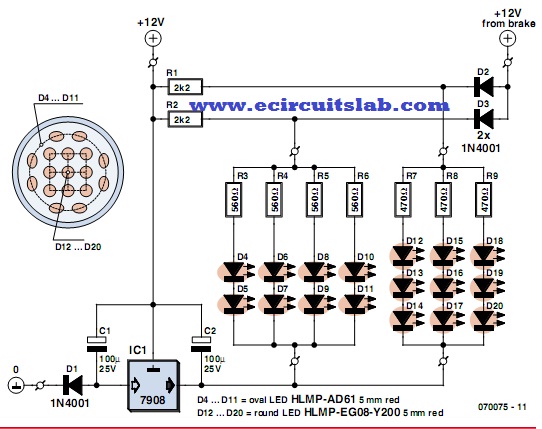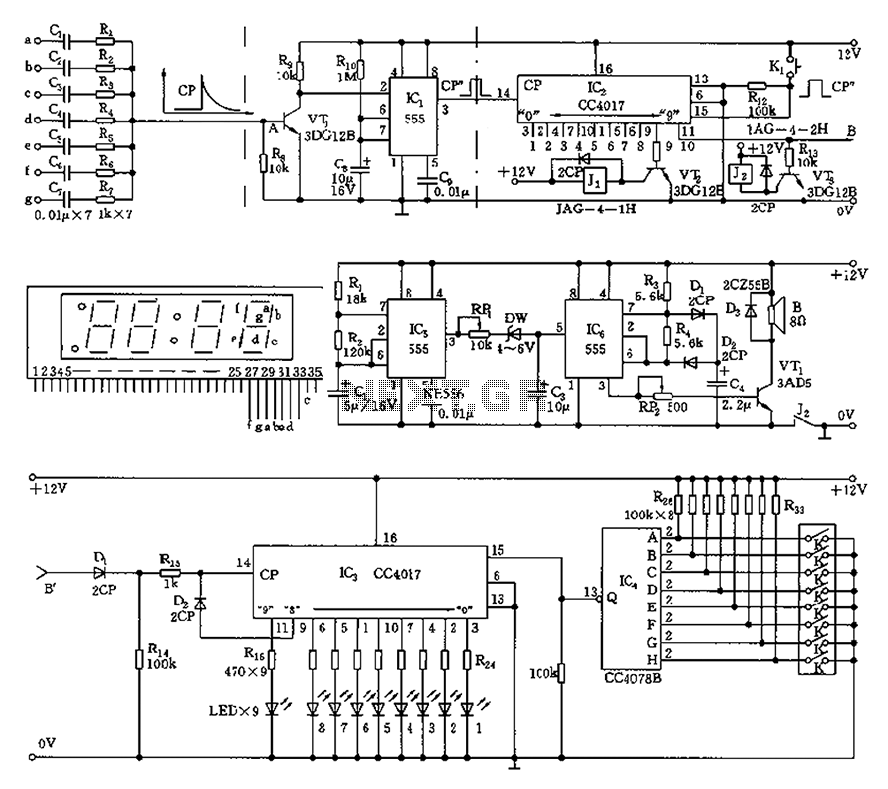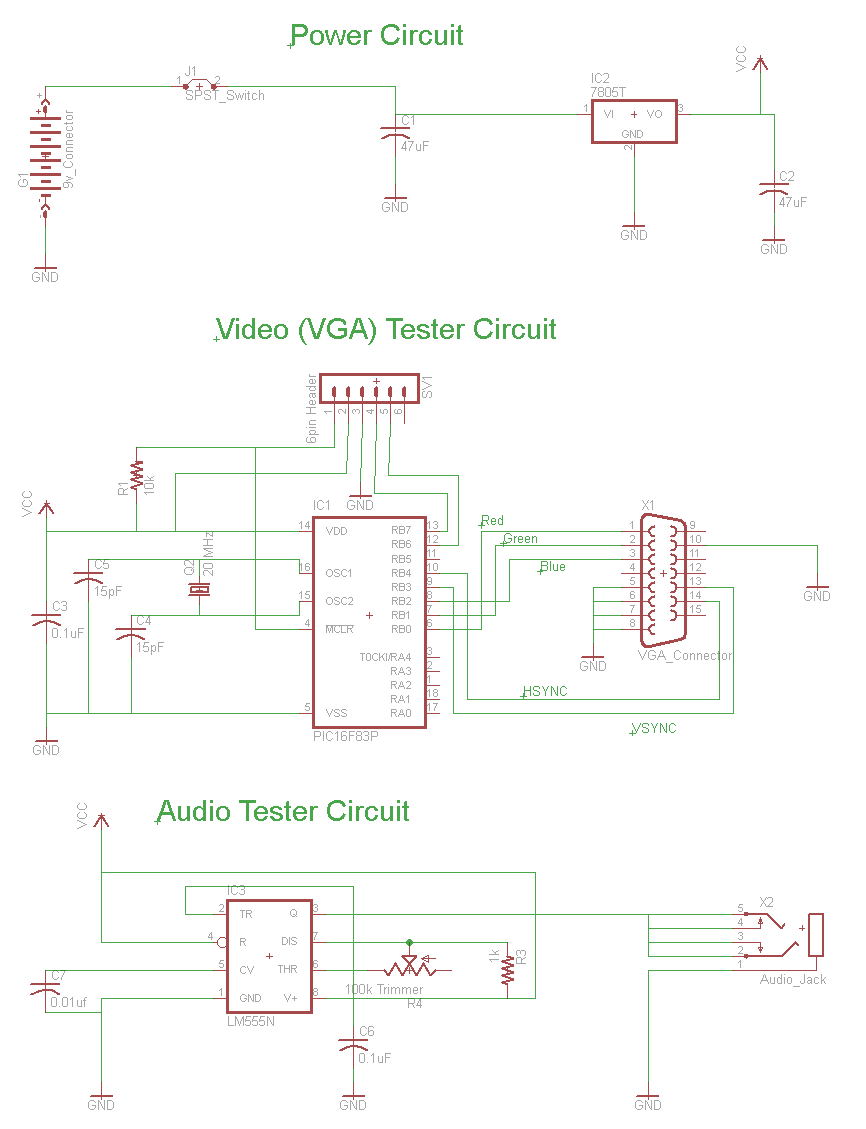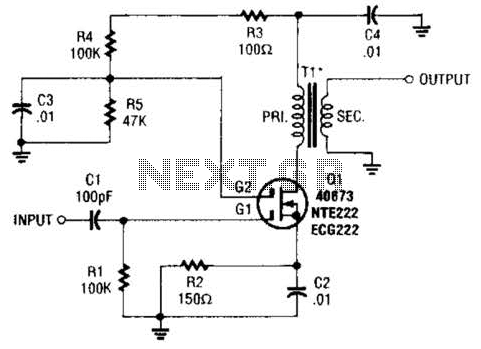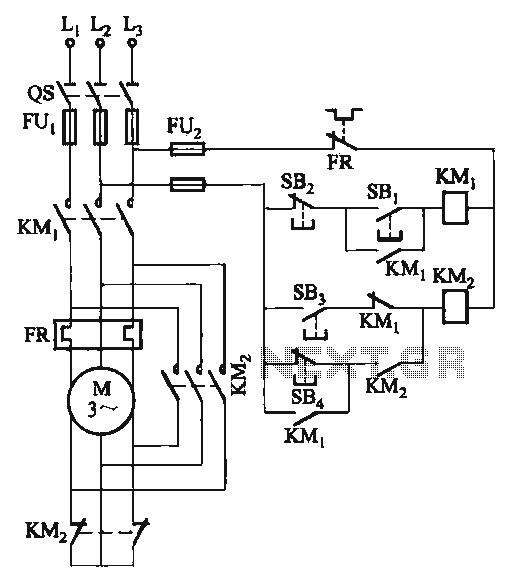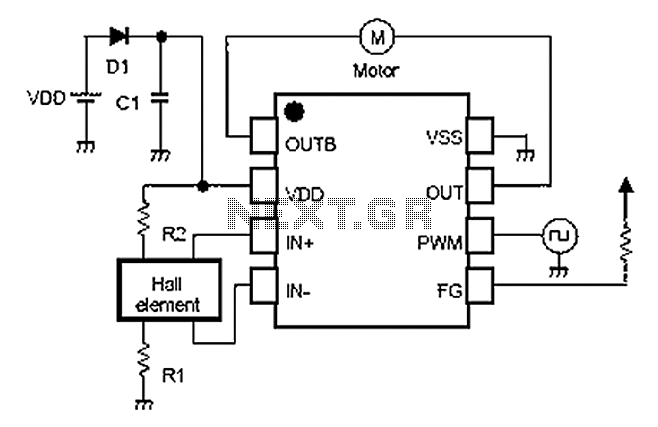
High fidelity amplifier circuit
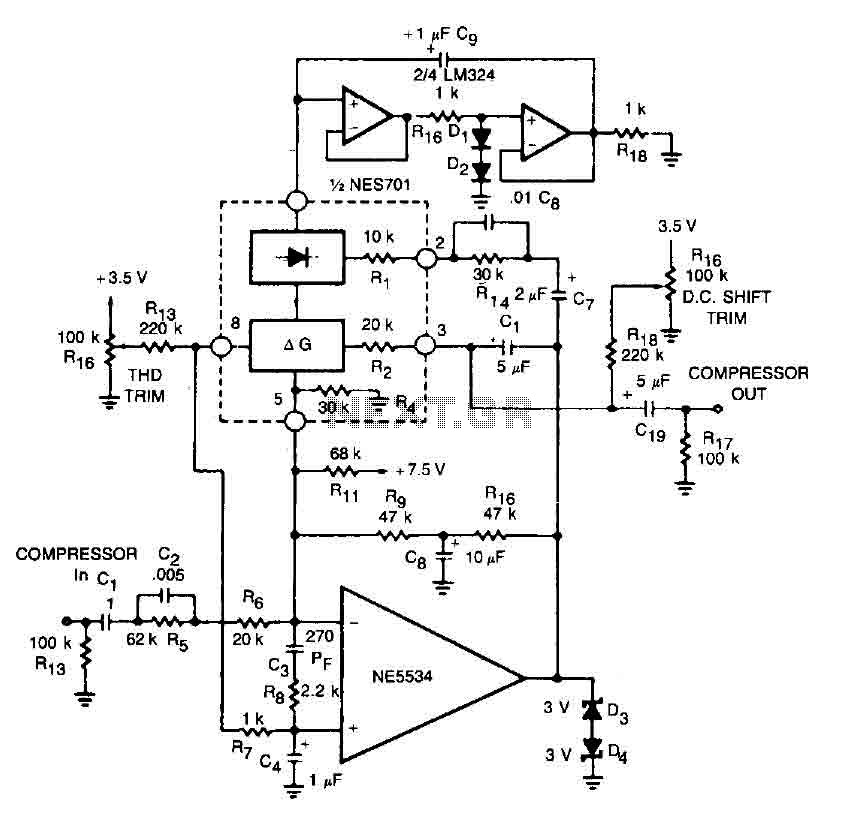
This circuit for a compressor utilizes a high-fidelity external operational amplifier (op amp) with high gain and wide bandwidth. A compensation network at the input is required for stability. The rectifier capacitor (Cg) is not grounded; instead, it is connected to the output of an op amp circuit.
When the compressor operates at high gain with a small input signal, it may experience overload when subjected to a sudden signal.
The described compressor circuit is designed to achieve high fidelity and dynamic range through the use of an external op amp, which provides the necessary gain and bandwidth for effective signal processing. The inclusion of a compensation network at the input stage is critical to maintaining stability, as it mitigates potential oscillations that could arise due to the high gain characteristics of the op amp.
The rectifier capacitor (Cg) plays a significant role in the circuit by smoothing the output signal. Its unique connection to the op amp output, rather than a direct ground reference, allows for improved performance in terms of transient response and signal integrity. This configuration helps prevent distortion that can occur when the circuit is subjected to sudden increases in signal amplitude.
During operation, if the compressor is set to high gain and receives a small input signal, it is susceptible to overload conditions when a sudden, larger signal is introduced. This can lead to clipping and distortion in the output if not properly managed. Therefore, careful consideration must be given to the design parameters, including the selection of the op amp, the values of the compensation network components, and the specifications of the rectifier capacitor, to ensure that the compressor operates effectively across a wide range of input signal conditions.
In summary, the performance of this compressor circuit hinges on the effective integration of high-fidelity components, careful attention to stability through compensation, and strategic design choices that enhance the handling of dynamic input signals.This circuit for a compressor uses a high-fidelity external op amp, and a high gain and wide bandwidth. A compensation network input is necessary for stability. The rectifier capacitor (Cg) is not grounded. but it is linked to the output of an op amp circuit. When a compressor is running at high gain (input signal of small size), and is suddenly struck by a signal, overload.
When the compressor operates at high gain with a small input signal, it may experience overload when subjected to a sudden signal.
The described compressor circuit is designed to achieve high fidelity and dynamic range through the use of an external op amp, which provides the necessary gain and bandwidth for effective signal processing. The inclusion of a compensation network at the input stage is critical to maintaining stability, as it mitigates potential oscillations that could arise due to the high gain characteristics of the op amp.
The rectifier capacitor (Cg) plays a significant role in the circuit by smoothing the output signal. Its unique connection to the op amp output, rather than a direct ground reference, allows for improved performance in terms of transient response and signal integrity. This configuration helps prevent distortion that can occur when the circuit is subjected to sudden increases in signal amplitude.
During operation, if the compressor is set to high gain and receives a small input signal, it is susceptible to overload conditions when a sudden, larger signal is introduced. This can lead to clipping and distortion in the output if not properly managed. Therefore, careful consideration must be given to the design parameters, including the selection of the op amp, the values of the compensation network components, and the specifications of the rectifier capacitor, to ensure that the compressor operates effectively across a wide range of input signal conditions.
In summary, the performance of this compressor circuit hinges on the effective integration of high-fidelity components, careful attention to stability through compensation, and strategic design choices that enhance the handling of dynamic input signals.This circuit for a compressor uses a high-fidelity external op amp, and a high gain and wide bandwidth. A compensation network input is necessary for stability. The rectifier capacitor (Cg) is not grounded. but it is linked to the output of an op amp circuit. When a compressor is running at high gain (input signal of small size), and is suddenly struck by a signal, overload.
